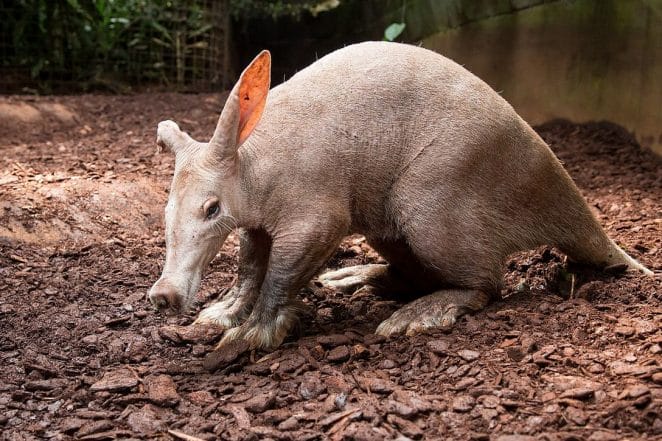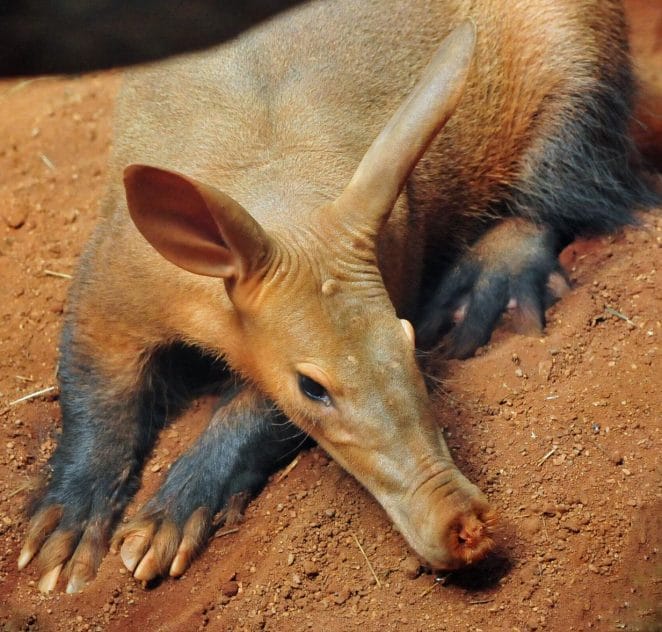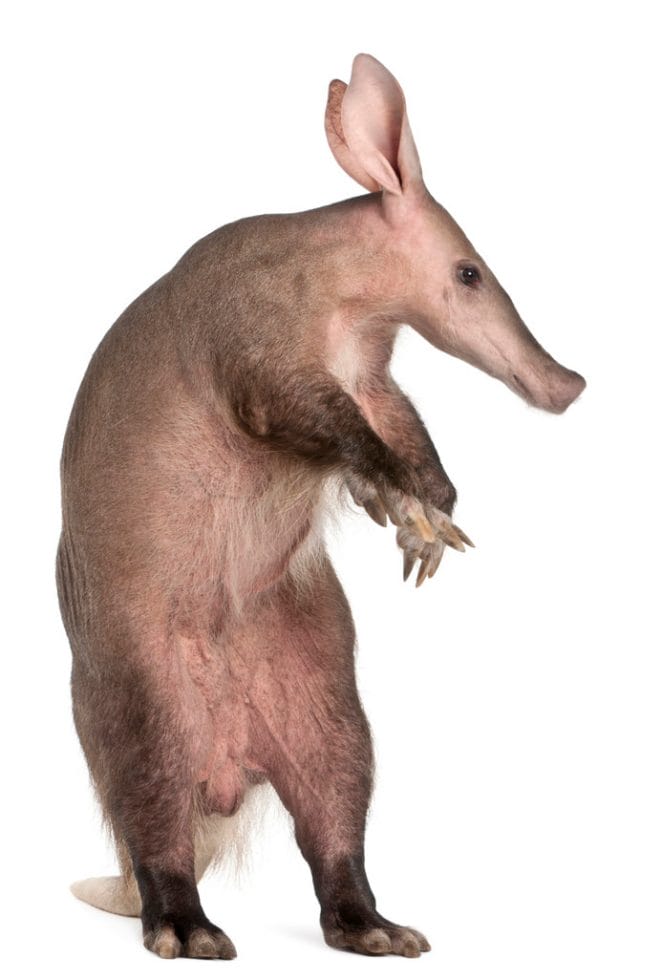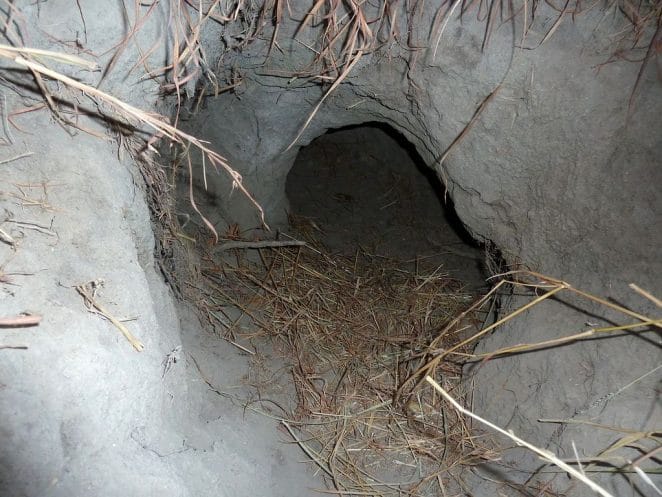Aardvark is a type of animal. They are mammals and insect eaters. Aardvarks live in Africa and Southern Asia. Aardvarks have long, pointy noses and claws on their front feet to help them dig for food in the ground. They also have very long tongues that they use to find ants, termites, and other insects underground. Aardvarks can be found in deserts, savannas, and grasslands.
Here are some fun facts you might not know about the aardvark:
1. The Aardvark (also known as the ‘antbear,’ or ‘digging foot,’) is a medium-sized African animal. Its Afrikaans/Dutch name, meaning “earth pig,” stems from early European settlers’ perception that it looked like a pig. The aardvark, on the other hand, is not related to the pig and is ranked separately.

2. Even though the Aardvark and the South American anteater have some characteristics and a likeness, they are not related. Elephant shrews, sirenians, hyraxes, tenrecs, and elephants are the closest surviving cousins of the aardvark.
3. Aardvarks are around the size of small pigs. They weigh between 110 and 180 pounds on average (50 to 82 kilograms). From head to rump, aardvarks are 43 to 53 inches (109 to 135 centimetres) long, with their tail adding another 21 to 26 inches (53 to 66 centimetres). It would be much larger if an aardvark put its tongue out. Their tongues can grow to be 12 inches long (30.5 cm). Their ears are also rather long, measuring up to 9.5 inches in length (24 cm).

4. The aardvark’s teeth are one of its most recognisable features. These teeth have dentine tubes (calcified tissues of the body), each containing pulp, which is bound together by cementum (the outer layer of the tooth). Teeth have no enamel coating, therefore they are constantly being worn down and regrowing. At birth, the aardvark has conventional front teeth that fall off and are not replaced. Only the cheek teeth of an adult aardvark remain on its jaws.
5. Aardvarks have four toes on their front foot and five on their back feet. Their ears are extremely lengthy at the base of their tail, and the tail eventually thins out. The nostrils are housed in discs at the end of their snouts, and their heads are long and narrow. Termite-eating animals typically have small, tubular mouths. The aardvark has an extremely long, thin tongue that can extend up to 30 centimetres when it comes to its sense of smell. The aardvark’s nasal cavity contains the most turbinates of any living mammal.

6. Aardvarks can be found in a variety of habitats throughout Africa south of the Sahara, including grasslands, savannas, rainforests, woodlands, and thickets. Because it is difficult to dig in rocky ground, they tend to avoid it. Their burrows range in length from 6.5 to 42 feet (2 to 13 metres).

7. Aardvarks dig for food as well. With their lengthy tongues, they delve into ant and termite mounds and eat up bugs. They eat nearly entirely ants and termites, though they will occasionally eat other insects such as scarab beetle pupae. The rough skin of the aardvark protects them from the fangs of their prey, and their nostrils close to keep dust and insects out.

8. Each night, they can consume up to 50,000 insects. Aardvarks do not chew their food before swallowing it whole. Food is instead ground in a muscular portion of the lower stomach. They don’t drink much water and rely on the insects they eat for moisture.
9. The aardvark possesses a gizzard-like digestive system designed to break down insects, much like a bird’s. Unlike males, females have lighter tails that can be virtually white in colour, whilst males have darker tails that can be almost black in colour.
10. Female aardvarks give birth to one offspring each year. Newborns are referred known as calves or cubs. Cubs weigh approximately 4.4 pounds when they are born (2 kg). The young remain with their mother for approximately six months before venturing out and excavating their own burrows.

11. Female aardvarks stay with their moms until the birth of the next cub, but males leave their mothers altogether during the next mating season. Female aardvarks have a constant home zone whereas males roam. As a result, experts believe aardvarks are polygamous, meaning they have multiple mating partners.
12. When it’s dark out, the Aardvark lives on its own, preferring to forage for insects and termites. The aardvark cucumber is the sole fruit eaten by aardvarks. With its long nose that it uses to sniff around for food, an aardvark emerges from its burrow in the late afternoon or just after nightfall. It has a home range of 10-30 kilometres. Because of its long ears and powerful front legs, the Aardvark can listen out for predators such as predator lions, leopards, or even hyenas and pythonos as it digs for termites or other ant colonies to feed on.
13. The layout of the Aardvark’s home burrow varies on a regular basis, and it moves on and builds a new one from time to time. Smaller animals, such as the African Wild Dog, take up residence in the old burrows. Burrows are shared by just the moms and cubs. The aardvark will either close the tunnel behind itself or spin around and attack with its claws if attacked in the tunnel.
14. Lions, leopards, hunting dogs, and pythons are the aardvark’s primary predators. The aardvark’s claws, tail, and shoulders can all be used to lash out at an enemy, and if that doesn’t work, they’ll flip onto their backs and use all fours. As a result of their thick skin, they have some degree of protection.

15. Aardvarks are Omnivores, which means they consume both plants and animals. Aardvarks have the ability to travel at rates of up to 25 miles per hour. In captivity, aardvarks can live to be over 24 years old. They live between 10 and 23 years in the wild.
Sources:Wikipedia, Live Science





GIPHY App Key not set. Please check settings